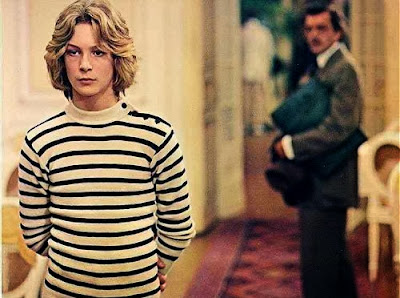Master musician who never performed in public
Any musician whose playing prompted Yehudi Menuhin to declare "Never had I heard anything like it... I could hardly believe my ears", and who was described by Maurice Béjart as "The greatest musician I had ever encountered in my life" deserves our attention. And they are even more deserving of that attention when we realise that this remarkable musician never performed in public and never made a commercial recording.
It was Ostad Elahi who prompted these accolades. He was born in western Kurdistan in 1895, and his father was a senior figure in the Ahl-e-Hagg [Fervents of the Truth]. This mystical order is found among the Perians, Kurds and Turkmen of Iraq and Iran, but is also found as far afield as the Yemen. The order is related to the Yazidis of Iraq, who are currently in the news because of their persecution by ISIS, and to the 'Alawis, to which the beleagured Assad regime in Syria adheres. The Ahl-e-Hagg is categorised as a heretical strand of Islam which shares with the Shiites a veneration for the Prophet Muhammad's cousin Alī bin Abī Ṭālib. However, despite this veneration for the Fourth Caliph the sect has dualist Manichean beliefs that align it with Zoroastrianism, Gnosticism and the heretical Christian Cathars. (The related Yazidi religion is influenced by Zoroastrianism, Hinduism, Judaism, Christianity as well as Islam.)
Ostad Elahi was a child prodigy who was recognised as a master of the tanbur - the Persian lute - by the age of nine. Until he was twenty-one he practised the tanbur in his native village for long hours, and his autodidacticism led him to expand the repertoire of the ancient instrument and develop a new playing technique. When his father died he renounced his ascetic lifestyle and embarked on a career in the Persian judiciary under the reforming Reza Khan. His career spanned almost three decades, and he rose to the position of chief judge of the criminal court of appeal in Tehran, the highest rank attainable in the judiciary. In these roles he became celebrated for his resistance to the corruption in Persia's criminal justice system.
Throughout this high profile judicial career Ostad Elahi remained committed to spiritual and musical development, and this led to his encounters with Yehudi Menuhin and Maurice Béjart during his time in Tehran. His development took him to away from his spiritual and musical roots to develop a synthesis that was more relevant to the mid-20th century. From Ahl-e-Hagg he moved on to advocate a syncretic approach to faith that reflected the perennialism of René Guénon, but which retained its veneration for Alī bin Abī Ṭālib. In the compilation of his teachings The Path of Perfection Ostad Elahi describes how: "Music is a divine creation. Music was created to express and awaken spiritual emotions". To achieve this awakening he advocates the Sufi practice of 'zekr' (or zikr) - the remembrance of God through music leading to ecstasy.
Although Ostad Elahi never gave a concert and made no commercial recordings, numerous recordings were made by his disciples, and for some of these the microphone was in the next room to avoid alerting the master to the presence of a tape recorder. Many of these unofficial recordings have been released on the Chant du Monde label in acceptable sound despite their unusual provenance. As an introduction The Sacred Lute: The Art of Ostad Elahi, a 2 CD overview compiled for the 2014 Metropolitan Museum, New York exhibition celebrating his art and music, is recommended. Samples of his playing and an excellent documentary introduction can be found in a WNYC programme linked to the exhibition. These archive recordings are a million miles from the fashionable world music that Ross Daly describes as “an offshoot of the pop music industry with an emphasis on party music”. Instead they allow us to experience music that Yehudi Menuhin described as "very sensitive, very powerful... and at the same time very precise and pure."
No review samples used in this post. Any copyrighted material is included as "fair use" for critical analysis only, and will be removed at the request of copyright owner(s). Also on Facebook and Twitter.











Comments